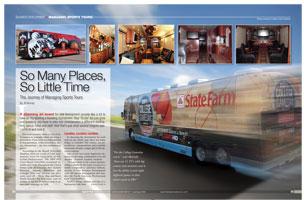
 If planning an event for one tournament sounds like a lot to take on, try tackling a traveling tournament.
If planning an event for one tournament sounds like a lot to take on, try tackling a traveling tournament.
Your "To Do" list just grew and suddenly you have to take into consideration a different destination, venue, hotel and staff. Well that's just what several leagues specialize in and love it.
For event planners, there is a lot of information to consider when choosing a destination. From hotel accommodations to transportation, venue selection to dining alternatives - the list continuously grows.
According to the Beach Volleyball Database, there are a total of 2,041 tournaments listed for Association of Volleyball Professionals. The 2009 AVP Crocs Beach Volleyball tournament includes nine stops throughout the United States with destinations that include Houston, Atlanta, Brooklyn and Chicago. Their tour schedule has obviously paid off - Misty May and Kerri Walsh became the first team, men or women, to top the $3 million mark in career team winnings in 2008.
Location, Location, Location
In choosing the destination for each stop on any sports tour, there are many things to consider. The venues, the accommodations, transportation and available restaurants all play a major part in the decision making.
One of the next most important elements in choosing a destination is an old standby - location, location, location.
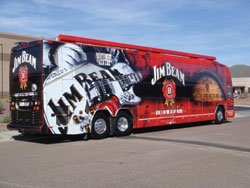 "The proximity to the venues and providing a shuttle by the hotel or access to a shuttle is imperative," said Terry Sullivan, director of New Business Development with 360 Sports Management that handles the North American Professional Golf Tour (NAPGT).
"The proximity to the venues and providing a shuttle by the hotel or access to a shuttle is imperative," said Terry Sullivan, director of New Business Development with 360 Sports Management that handles the North American Professional Golf Tour (NAPGT).
NAPGT brings athletes and fans to a destination with their tournaments, bringing anywhere from 300 to 3000 people to an event depending on its scope and size.
"This is something in our RFP (request for proposal). We won't consider a hotel unless they have a shuttle service," said Sullivan.
Christopher Downs, media relations manager, with Little League of America couldn't agree more, "We have a reception of eight teams (during a tournament) and house them for seven to eight days. All of the amenities need to be accommodated," said Downs. "We need to be in an area that we can easily get them into. We prefer larger airports and accessibility to international flights. We try to ensure the destination's drive time is one to two hours within the airport location."
But probably one of the biggest factors is the ease of the destination itself as a whole.
The Little League Baseball tournaments have been operating since 1942 and they have 'planning a sports tour' down to a science.
 "The venues themselves are reviewed by the Little League International Tournament Committee," said Downs. "They are in contact with the local committee and together they review the venue, i.e., if the fields and facilities are up to specs and are certainly worthy (of hosting the event)."
"The venues themselves are reviewed by the Little League International Tournament Committee," said Downs. "They are in contact with the local committee and together they review the venue, i.e., if the fields and facilities are up to specs and are certainly worthy (of hosting the event)."
"The destinations have been the same for the past 10 years," continued Downs. "That stability is helpful and they know they can reach out to the committees."
Another key element in the destination is the availability of premiere venues. For the NAPGT the number one priority in choosing a destination by far is the venue.
"Since we are a developmental sports organization," said Terry Sullivan, director of New Business Development with 360 Sports Management that handles the NAPGT, "all of our events are designed around finding quality athletes trying to make it the next level."
Do Not Disturb
Another deciding factor for group tours is securing appropriate hotel accommodations for the participants and their families. With today's economics, the common thought is to cut, cut, cut and that includes unnecessary travel.
Some industries are recession-proof and it would appear that the travel industry within the sports market is one of those industries. Not to say that sports fans, competitors and supporters aren't cognizant of the current economic climate, but rather, smarter with their negotiations.
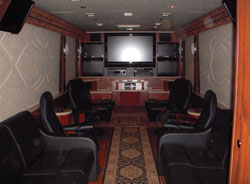 Bottom line - mom and dad may not travel for work anymore, but there's no chance that they will miss "Junior" knocking it out of the park in Tuscaloosa in July. That translates into dollars and cents for the planner, hotels, airlines and restaurants.
Bottom line - mom and dad may not travel for work anymore, but there's no chance that they will miss "Junior" knocking it out of the park in Tuscaloosa in July. That translates into dollars and cents for the planner, hotels, airlines and restaurants.
Trends indicate that teams competing for championship titles are looking for amenities associated with four-diamond properties. Travel teams with limited budgets, however, are interested in limited service properties with some amenities.
Accommodations play a major role in any sports tour. Ensuring that the destination itself can provide not only enough hotel rooms for the participants and their families, but also the flexibility in handling their needs with minimal preparation.
"With the other World Series that we operate," said Downs, "the hotels are key. They not only accommodate the athlete but also accommodate the parents. The only caveat to that is when they (the teams) advance; there is a very short time to make those arrangements. You're kind of riding the road along with that team."
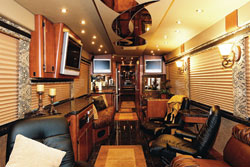 Negotiating a group discounted rate is imperative to the success of any travel program. If the opportunity to align with a specific hotel chain presents itself, seriously consider it and review the benefits of utilizing and partnering with an established brand.
Negotiating a group discounted rate is imperative to the success of any travel program. If the opportunity to align with a specific hotel chain presents itself, seriously consider it and review the benefits of utilizing and partnering with an established brand.
On the Road Again
Major sports tours have to take all elements of transportation into consideration during the planning phase.For larger and international tournaments, a partnership with an airline makes the most sense.
Major League Soccer renewed their relationship with American Airlines for the second year in March 2009 and the United States Fencing Association is aligned with United Airlines.
It's common for major airlines to sponsor professional and collegiate sports teams. Several NASCAR drivers either have contracts with a company that runs private planes or have their own plane at their disposal to ensure they make each stop on the circuit.
However, most tournaments can't afford private planes or may not offer the exposure that will attract a major airline, so what's next?
Most motor coaches can provide what any sports tour would need as long as the travel time is within reason.
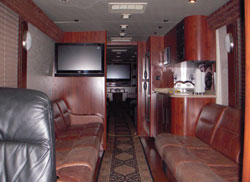 Creative Coach Solutions provides just what any sports team might need, "Everything is upscale," said Pat Mitchell,president of Creative Coach Solutions. "It's finished like an upscale home."
Creative Coach Solutions provides just what any sports team might need, "Everything is upscale," said Pat Mitchell,president of Creative Coach Solutions. "It's finished like an upscale home."
"There is a galley that includes a microwave, coffee maker and all the kitchen necessities with the exception of a gas or electric cook top or oven," Mitchell explains. "There are flat panel big screen televisions inside and depending on the layout (of the motor coach), how many it would have."
"From our vantage point," continued Mitchell. "Anything that is stationary, like a home, can be built on a motor coach and we emulate a very fine home. "All the surfaces are Corian or granite and the floors are hardwoods or tile. Creative Coach Solutions has provided luxury motor coaches for ESPN's College Gameday, the Sierra Mist Youth Soccer Shocker, and Coca-Cola Football Tour among others."
"On the College Gameday coach," said Mitchell, "there are 11 TV's with big screens and monitors and it has the ability to feed eight different games in that motor coach in HD."
Seating is ample and comfortable with all leather seating and a combination of sofas and recliners. There is café seating for four to eight people for dining and they even have the ability to accommodate up to 15 people sleeping comfortably.
Bottom Line
Bottom line - planning a sports event is hard work. Planning a multi-city sports event is a lot of hard work. But both can be managed with the right connections, negotiations and partners.

